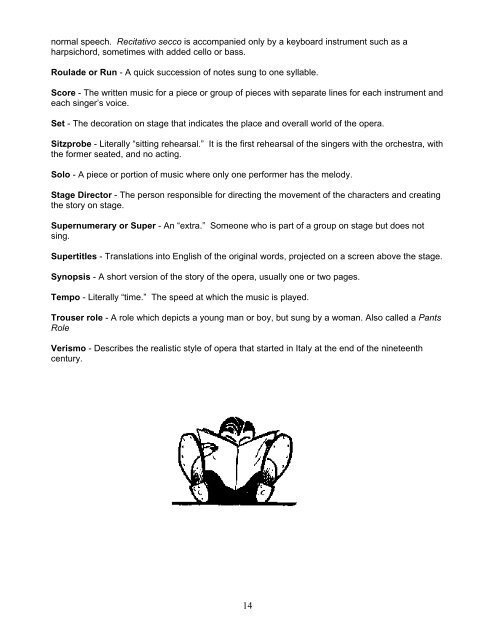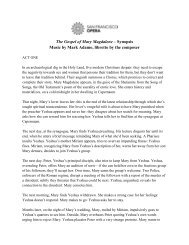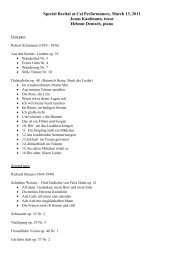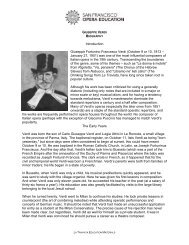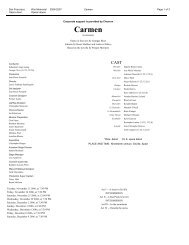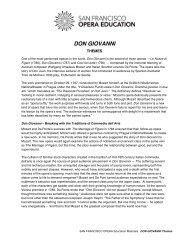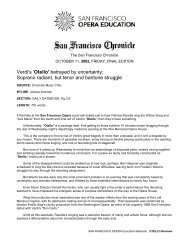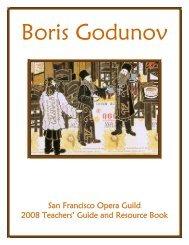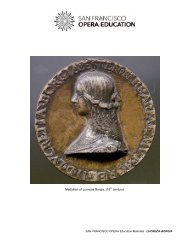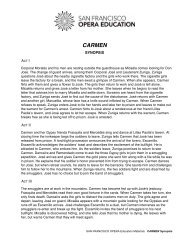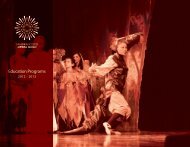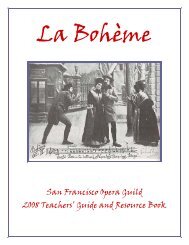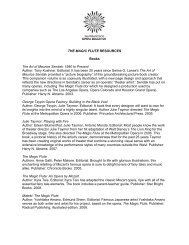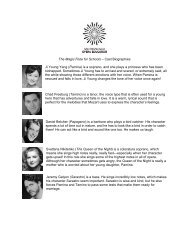The Rake's Progress Teachers Guide - San Francisco Opera
The Rake's Progress Teachers Guide - San Francisco Opera
The Rake's Progress Teachers Guide - San Francisco Opera
Create successful ePaper yourself
Turn your PDF publications into a flip-book with our unique Google optimized e-Paper software.
normal speech. Recitativo secco is accompanied only by a keyboard instrument such as a<br />
harpsichord, sometimes with added cello or bass.<br />
Roulade or Run - A quick succession of notes sung to one syllable.<br />
Score - <strong>The</strong> written music for a piece or group of pieces with separate lines for each instrument and<br />
each singer’s voice.<br />
Set - <strong>The</strong> decoration on stage that indicates the place and overall world of the opera.<br />
Sitzprobe - Literally “sitting rehearsal.” It is the first rehearsal of the singers with the orchestra, with<br />
the former seated, and no acting.<br />
Solo - A piece or portion of music where only one performer has the melody.<br />
Stage Director - <strong>The</strong> person responsible for directing the movement of the characters and creating<br />
the story on stage.<br />
Supernumerary or Super - An “extra.” Someone who is part of a group on stage but does not<br />
sing.<br />
Supertitles - Translations into English of the original words, projected on a screen above the stage.<br />
Synopsis - A short version of the story of the opera, usually one or two pages.<br />
Tempo - Literally “time.” <strong>The</strong> speed at which the music is played.<br />
Trouser role - A role which depicts a young man or boy, but sung by a woman. Also called a Pants<br />
Role<br />
Verismo - Describes the realistic style of opera that started in Italy at the end of the nineteenth<br />
century.<br />
14


